#German Automaker
Explore tagged Tumblr posts
Text
नई मर्सिडीज-AMG CLE 53 कूप अनावरण: लग्जरी, तेज और हाइब्रिड पावर!
नवीनतम Mercedes-AMG CLE 53 कूप के बारे में – एक शानदार लग्जरी कार जिसमें आधुनिक इनलाइन 6-सिलेंडर हाइब्रिड इंजन है। इसकी प्रभावशाली 4.2 सेकेंड में 0-100kmph की गति और आकर्षक डिजाइन के साथ, यह कार न केवल तेज़ है, बल्कि अत्यंत सुविधाजनक और पर्यावरण के अनुकूल भी है। जानिए इसकी विशेषताएं और बाजार में इसके प्रभाव के बारे में। Image Credit:-Social Media जर्मनी के प्रतिष्ठित वाहन निर्माता, मर्सिडीज…
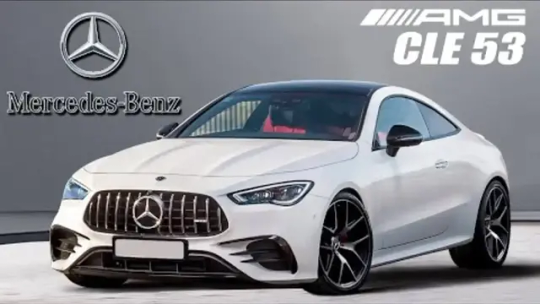
View On WordPress
#Advanced Technology#Aggressive Design#AMG CLE 53#Automotive Innovation#Car Enthusiasts#Cutting-Edge Features#German Automaker#High-Speed Performance#Hindi#Hybrid Engine#K.G.N Digital#Luxury Coupe#Luxury Vehicle#Mercedes-Benz#Modern Interior#Performance Car#Technology
0 notes
Text
In Canada, we're famous for our bilingualism. Sure, there's other bilingual countries out there. Some might even be tri- or quadrilingual. We don't know, and our media doesn't tell us. All we do know is that when you pick up a cereal box from the shelf, you get to learn what the French name of the cereal is. It's Cheerios. Couldn't have guessed that.
All this means that, throughout your life in Anglo Canada, you are constantly getting a subliminal reinforcement of French. One day, you discover that you can actually read a reasonable amount of the microwave installation instructions despite having pulled the wrong manual out of the box. Shortly after that, you begin to feel a curiosity for this mysterious other culture. And by that, I mean you want to go buy a French car.
Unfortunately for me and my fellow Canucks, options for French cars are few and far between. The overwhelming hegemony of the Americans mean that the absolute weirdest stuff we get is made in Romania under contract to Germans using Japanese robots. Why do we not have Citroëns? There is no valid reason, other than the fact that they went nearly bankrupt the last time they tried to sell their cars here. That's not supposed to discourage you, silly, General Motors has gone bankrupt three or four times while I've been writing these sentences!
So, if you're out there, French automakers, please bring your weird cars to my country. We can go get a steamé and a Pepsi, and we can find out if the interior of your car holds up well to poutine gravy stains. It probably doesn't, but that's okay, I'll still take the depreciated Francomobile and enjoy opulent luxury comfort on my way back to my home province, where the only French we use is to incorrectly pronounce the phrase "croissaint-wich" at the airport Burger King.
195 notes
·
View notes
Text
Tens of thousands of Volkswagen employees have halted production to protest proposed pay cuts. The German automaker has stated it will need to close three manufacturing plants due to rising labor expenses, material shortages, and, most importantly – the climate change agenda that has demonized fossil fuels.
Over 120,000 workers now face a 10% pay cut if they can manage to keep their jobs. The IG Metall union has warned that protests will be fierce. Volkswagen remains Germany’s top-selling car brand, composing 19% of the market share. Yet profit margins have dropped from a forecast of 7% to 5.6% for 2024 after the company’s cash flow turned negative in the first half of the year. The company states it needs to save 10 billion euros by 2026 in addition to finding a way to cut another 4 billion euros. Operating profits have fallen by 11.4% and they simply cannot continue producing these EVs at the same pace they were producing dreaded fuel-powered cars because the demand is not there.
Now many blame China for providing state subsidies for EVs that are far cheaper than the vehicles produced in Germany. This is why places like the US have placed a 100% tariff on those vehicles so that there is no demand. However, there is simply low demand for electric vehicles everywhere. You cannot force people to buy EVs even if you destroy the energy sector and make prices skyrocket 300% as they did by killing Nordstream. Pushing manufacturers to switch to meet these arbitrary emission targets is killing the entire auto sector which is about 17% of Germany’s entire GDP.
Germany believes it can reduce carbon emissions by 65% by 2030, followed by an 88% reduction into 2040 before meeting gas net neutrality in 2045. They claim that Germany is five years behind on its adoption of electric vehicles as it is far from meeting its goal of 15 million EVs by 2030. The average EV price in euro shot up 7.5% in the past year to €56,669. Infrastructure and charging stations remain inadequate to meet these goals.
Germany relies heavily on automotives, and Europe relies heavily on Germany as its top economy. Now, due to climate initiatives, Volkswagen is closing plants for the first time in its 87-year history. Pay close attention to Germany’s automotive sector, as it could easily cause a ripple effect throughout the entire European economy.
17 notes
·
View notes
Text
Volkswagen’s China Joint Venture to Exit Xinjiang
Positive Step Doesn’t End Risk of Supply Chain Links to State-Imposed Forced Labor

Volkswagen’s decision last week to cease operations in China’s Xinjiang Uyghur Autonomous Region after 12 years is significant, though long overdue.
The German automaker’s exit demonstrates the near impossibility of operating responsibly in a region where the Chinese government is committing crimes against humanity, and subjecting Uyghurs and other Turkic Muslims to state-imposed forced labor.
Volkswagen was among the highest-profile global brands to maintain a presence in Xinjiang, with a subsidiary of its Chinese joint venture, SAIC-Volkswagen, operating a production plant in Urumqi, Xinjiang’s capital, and a testing track in the city of Turpan. The company has long denied any risk of forced labor at the facilities and cited “economic reasons” for the decision to sell them.
Sustained global pressure on Volkswagen led the company to commission and release a deeply flawed audit of the Xinjiang facilities in 2023. Although the audit purportedly found no evidence of forced labor at the plant, the German official overseeing the audit acknowledged it was based on a review of documentation rather than interviews with workers, which he said could be “dangerous.” He also suggested the risk of retaliation meant workers would be unlikely to report evidence of forced labor at the plant.
9 notes
·
View notes
Text
Volkswagen refuses to pay compensation for slave labor in Brazil

Representatives of the German automaker Volkswagen have left the negotiating table with the Brazilian Labor Prosecution Office over alleged cases of slave labor at a farm which the company owned in the 1970s and 1980s, during the military dictatorship.
The company was asked to pay BRL 165 million (USD 32 million) in compensation to 14 workers who were subjected to degrading working conditions. Part of the value would also be used to find other people who experienced the same conditions.
Volkswagen said it did not agree with “all the allegations” of the investigation, which is said was “one-sided and presented by a third party”. Prosecutors said they would take “extrajudicial and judicial measures” to ensure the damage is repaired.
Continue reading.
#brazil#politics#brazilian politics#workers' rights#volkswagen#mod nise da silveira#image description in alt
115 notes
·
View notes
Photo


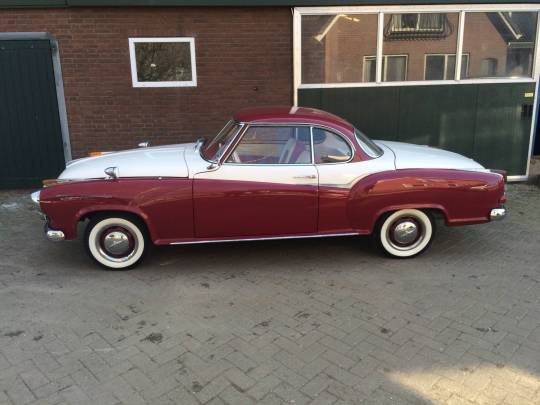


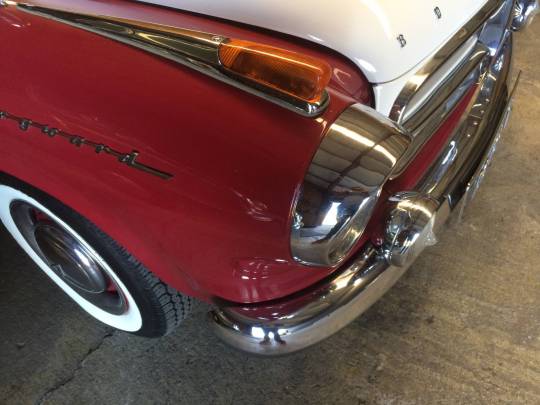
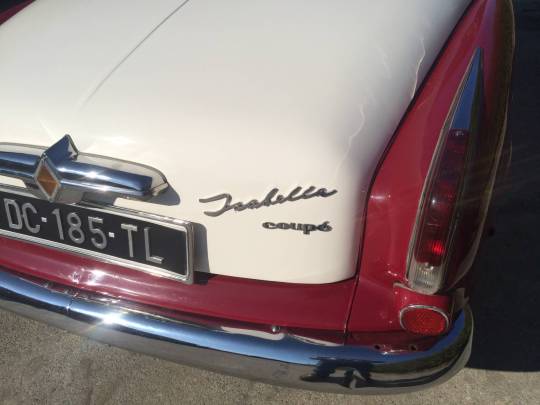


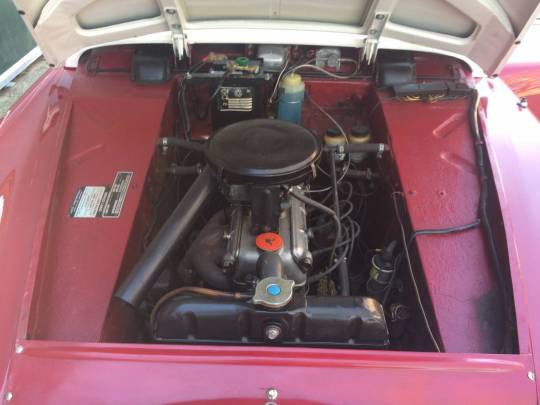
Borgward Isabella Coupé
Has any automaker gone from oblivion to success and back again as quickly as Borgward? Mention the name today, and you're likely to get blank stares, or questions along the lines of "Borgward? Who made those?" It's hard to imagine any European posing that sort of question in 1955, when Borgward had risen from the post-war rubble to outsell all other German automakers but Volkswagen, or 1958, when the Bremen firm very nearly nipped Porsche for the German sports-car championship. And yet, by 1962, the company was gone, the victim of a tragic and avoidable series of circumstances.
The Isabella was a bull's-eye in the mid-priced sedan market segment. Volkswagens were less expensive, but smaller and less powerful. Mercedes-Benz's 180 sedan had the sophistication of an overhead cam, but no greater top speed, and cost 30 percent more than the Isabella's list price of 7,265 Deutsche Marks. Opel's Olympia Rekord couldn't touch its top speed, or its all-coil-sprung suspension; and BMW had nothing between the fantastically expensive "Baroque Angel" 501 and the Isetta-based 600 microcar. On top of it all, the press loved the car. By the end of 1954, more than 10,000 Isabellas had rolled out the factory gates.
The Isabella had thoroughly up-to-date underpinnings, with a coil spring at each corner, swing axles in the rear and A-arms up front. The engine, a pushrod four designed by Karl Ludwig Brandt, wrung 75hp from its 1,493cc, with its relatively high 8.2:1 compression ratio and good breathing. The intake manifold was entirely enclosed atop the engine, making for a tidy design that could have been mistaken for an OHC. So sound was the engine that, developed for racing, it powered Cooper-Borgwards to many Formula 2 victories in the Fifties. The Borgward RS, or Rennsport, became Porsche's nemesis in the hands of drivers like Stirling Moss, Jo Bonnier and Hans Herrmann.
If the Isabella had a flaw, it was that its development had been limited, and early cars suffered from weak engine bearings and front-end components. Competitors started a whispering campaign about "die Traumfrau mit der schmutzigen Unterwäsche," or "the dream girl with the dirty underwear," but Borgward, unfazed, worked with its suppliers to iron out the bugs, and no real harm was done to the model's reputation.
Just as with the Hansa 1500, new models were quickly spun off the Isabella. In 1955, Borgward launched convertible and station wagon versions, as well as a hot TS ("Touring Sport") model with a two-barrel carburetor that could top 90 MPH, leaving Porsche 1300s behind. As the decade wore on, new designs from its competitors and a softening economic situation led to declining sales, prompting Carl F. W. to add the most glamorous model yet to the Isabella lineup: the Coupé.
74 notes
·
View notes
Text
BMW New 6 (E3).
The BMW New Six (also known as the BMW E3) is a line of mid-size luxury sedans and grand tourer coupés produced by the German automaker BMW from 1968 to 1977.

The two initial models, introduced in 1968 and sold through 1977, were the 2.5 L 2500 and 2.8 L 2800.
#bmwlove#auto show#bmw#bmw motorsport#automotive#bmw cars#bmw classic#automobile#muscle car#bmwlife#bmw lovers#bm
2 notes
·
View notes
Text
youtube
Anger and concern among Volkswagen workers rise as potential plant closures loom | DW News
Germany — Europe's biggest economy — has been facing growing headwinds, and today workers at Europe's biggest carmaker — Germany's Volkswagen — learned their future could be on the line. Staff representatives announced on Monday that VW intends to close at least three plants in Germany, and slash tens of thousands of jobs. VW currently employs more than 100,000 workers at ten plants here in Germany, mostly in the country's north. So far, management has not confirmed the plans. But ahead of the next round of wage negotiations later this week, CEO Thomas Schäfer issued a statement hinting at deep cuts. If the company were to go ahead with this plan, it would be unprecedented in the German automaker's 87-year history. Such plant closures had been considered off the table until now.
P.S. No surprises here! This was to be expected after looking at how much dealers are asking for a VW Golf or VW ID.3...Almost nobody can afford to buy them, let alone operate or repair...badly overpriced and overengineered ICE vehicles or their EVs!
Take a look at the news archives when Tesla only produced about 75,000 electric cars and the development strategy for domestic EV manufacturers in China was released...! Look at how arrogant VW management, company employees and German politicians treated the new affordable electric car manufacturing technology back then in 2016/2017...! Electric cars are definitely not to blame for VW's problems, but only the wrong actions (dieselgate) or inaction of the company's management...
3 notes
·
View notes
Text
2 notes
·
View notes
Text





“A European Answer To The Jeep”
1973 Volkswagen Thing 🇩🇪
The Volkswagen Thing, internally named the Volkswagen Type 181, was developed by the German automaker as a Jeep-like vehicle for the West German Army, but, suddenly, it became quite popular amoung civilians, especially in USA.
Available exclusively for “No Limits” and “All Inclusive” tiers this August. Since September 1’st. Available for All Inclusive tier only.
Model with HQ interior, open/close doors, soft top and functional light.
Go and join my Patreon!
#the sims 4#sims 4#sims4#sims4car#the sims 4 cc#the sims 4 custom content#thesims4cars#the sims 4 cars#sims4vehicles#the sims#the sims 4 cc finds#sims 4 cc finds#the sims 5#sims 4 cars#sims 5#sims 4 cc#the sims custom content#sims 4 alpha cc#sims
21 notes
·
View notes
Photo
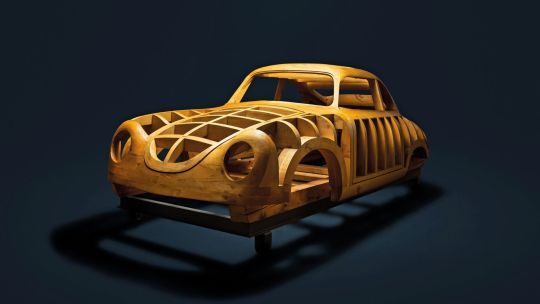
Porsche 356 woodframe !
Porsche's first sports cars had aluminum body panels, but it was nature's own lightweight material that made their iconic shape possible.
The Porsche 356 had bodywork that where the panels were hammered and hand rolled into shape, and a wooden frame model was used to ensure everything lined up.
That frame still exists, and is in relatively good condition. It's at the Porsche Automuseum in Gmünd, Austria, where the first Porsche production cars were completed before manufacturing moved to Stuttgart, Germany.
The frame is sometimes called Holzklopfmodell, which is German for "hammered wooden frame," but the frame itself wasn't hammered. Rather, it served as a model the factory workers used for shaping and fitting of the aluminum body panels. It was a time-consuming process that sometimes required multiple attempts to get a door or fender to perfectly fit the frame, which was the exact shape of a 356 body. The process took at least 90 hours, according to Porsche.
Handmade bodywork was primarily a feature of the earliest Austrian-built Porsches. Starting in 1948, Porsche built 52 cars in Gmünd, including 44 coupes and eight convertibles, plus between eight and 10 super light (SL) bodies that were completed by Porsche's racing department in Stuttgart between 1951 and 1952.
When production shifted to Germany in 1949, Porsche switched to steel bodies and mechanized manufacturing processes, leaving hand-formed aluminum for specials like the 16 lightweight 356 America Roadsters. A new wooden frame eventually replaced the original.
Because steel is much harder than aluminum, Porsche started using presses to manufacture body panels, which also allowed it to produce cars at a faster rate. Today, the 356 wood frame remains as a reminder of the automaker's early days.
Word: Stephen Edelstein
#art#design#sportcars#sportcar#luxurycars#luxurycar#luxurylifestyle#porsche#porsche 356#bodywork#millwork#carpentrywork#handmade#austria#history
45 notes
·
View notes
Text
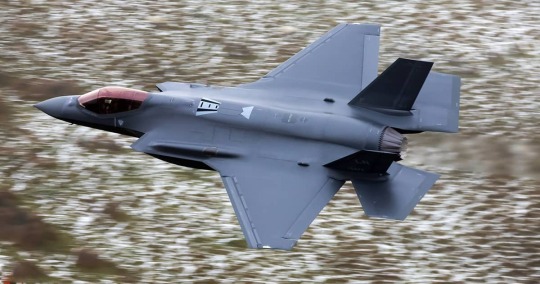
Finland approves deployment of the F-35A assembly line at Patria
Fernando Valduga By Fernando Valduga 04/03/2024 - 23:18in Military
The company Patria, in collaboration with the Finnish Ministry of Defense, is prepared to build an assembly facility in Finland for the production of F-35 Block 4 fighters.
The recent approval by the Ministerial Finance Committee of the Ministry of Defense's proposed lease of land and facilities is a significant milestone in the $9.6 billion acquisition agreement between Finland and Lockheed Martin, covering the delivery of 64 F-35A jets to the Finnish Air Force.

The automaker, a crucial component of the initial phase of the contract, will be located near the city of Nokia, with the beginning of the construction of the engine assembly building scheduled for the second half of 2024. The lease agreement for the site was signed in January between the Finnish Defense Forces and Defense Properties of Finland.
The Finnish Minister of Defense, Antti Häkkänen, emphasized the contribution of industrial cooperation to the defense industry of Finland, stating: “The F-35 agreement will generate critical experience in maintenance and repair, including reliability of maintenance, promoting significant know-how in Finland for the assembly and testing of F-35 engines.”
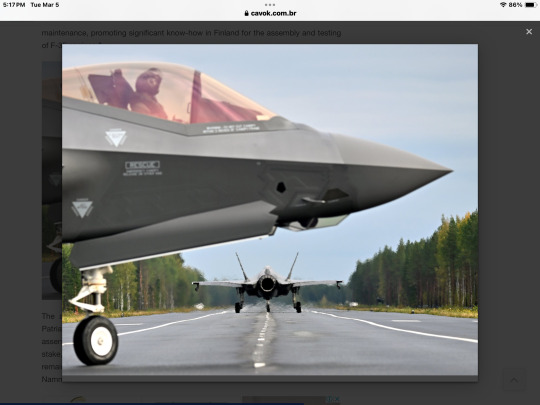
The assembly factory will collaborate closely with the regional aircraft center of Patria's aviation division in Tampere, with about 100 employees involved in various assembly functions at the facilities. Patria, in which the government holds a 50.1% stake, will work alongside the Norwegian company Kongsberg, which controls the remaining stake. In addition, Patria owns half of the Norwegian defense contractor Nammo.
The F-35s are scheduled to replace the former McDonnell Douglas F/A-18 Hornet jets of the Finnish Air Force, with retirement scheduled for 2030. The first batch of F-35 is expected to be delivered and deployed in the Arctic air bases in the regions of Lapland Finland by 2026.
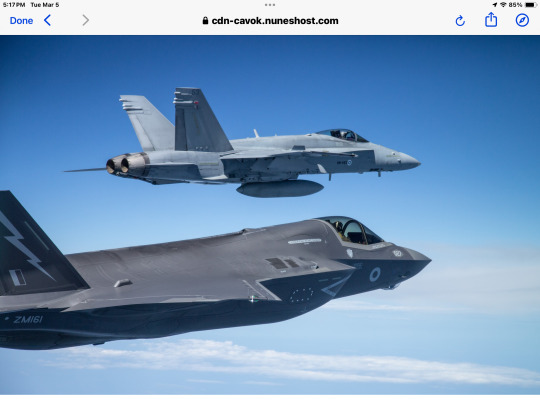
The industrial cooperation component is expected to gradually expand by 2030, potentially covering the production or assembly of specific aircraft parts and systems in Finland. The Finnish Air Force has already carried out tests to evaluate the suitability of the F-35 to operate in extreme climatic conditions in the Arctic, with recent exercises including maneuvers on stretches of "closed road" in the Arctic and subarctic regions.
The ongoing exercises, such as the one-week Hanki 24 workouts in the northern part of the country, aim to better evaluate the adaptability of the F-35 to the challenging winter conditions of Finland, characterized by limited daytime light.
Tags: Military AviationF-35 Lightning IIIlmavoimat/Finnland Air ForceLockheed MartinPatria
Sharing
tweet
Fernando Valduga
Fernando Valduga
Aviation photographer and pilot since 1992, he has participated in several events and air operations, such as Cruzex, AirVenture, Dayton Airshow and FIDAE. He has works published in specialized aviation magazines in Brazil and abroad. He uses Canon equipment during his photographic work in the world of aviation.
Related news
BRAZIL
IMAGES: How was the farewell of the C-130 Hercules at the FAB, after almost 60 years
04/03/2024 - 18:36
MILITARY
VIDEO: Turkish manufacturer tests Akinci drone with high-precision missile systems
04/03/2024 - 14:30
MILITARY
IOMAX prepares updated Grand Caravan aircraft for ISR missions with the Royal Jordanian Air Force
04/03/2024 - 13:00
MILITARY
Pentagon will suspend V-22 Osprey flight ban this week
04/03/2024 - 12:00
INTERCEPTIONS
Hours after taking over NATO mission, German Eurofighters intercept Russian aircraft
04/03/2024 - 09:00
MILITARY
Russian Aerospace Forces receive a new AWACS A-50U Mainstay aircraft
04/03/2024 - 08:23
6 notes
·
View notes
Text
Maybe you should go on down to your local public library. If you're reading this while you're there, put this down and go read an actual book written by someone who isn't irredeemably obsessed with maintaining an icon of the decline and fall of the American automaker. And if you're reading this on the way there, stop driving while using your phone. You need to be watching that coolant temperature gauge or you're gonna be putting in another head gasket.
Public libraries used to have a bad image, of being full of stuffy unloved books and a strange odour of decomposing newsprint. Nowadays, though, they're full of many exciting things. This is because the new generation of librarians work hard to make this stuff relevant to the average person, and also because the old librarians got so tired of explaining to me in very small words that they don't have Haynes manuals that they quit.
You might find other exciting things to do. The class-free nature of public institutions means that you get to learn a lot about folks in different economic circumstances than yourself. That builds community cohesion, especially when you ask them to help you push start your shitbox afterward. Lots of family activities, too, like wondering what that new kind of fluid leaking out of the German cars in the parking lot is. It doesn't taste like Pentosin.
And: good news. The library computers now have online Haynes manuals! They're like real manuals, but inexplicably trapped inside a small flickering plane that brings torment to everyone else who gazes upon them. You still can't bring an entire transmission in there to tear down, because it gets gear oil all over the keyboard. You'll have to pay a few cents to print it off first. Tragedy of the commons, and all that.
315 notes
·
View notes
Note
That car emblem ask, I have no idea when you sent it other than within the last week or so, never showed up on desktop was there when I looked on mobile though, was answering it and wanted to add a image for the emblem with the weasel on it so I stuck it in my drafts and it went poof again not on desktop or mobile so.
that one looked like it could be the Peugeot lion but with other things going on that I can't recognize as anything from automaker emblems.

the way they're positioned is pretty much identical though
It does look similar, but with an ermine instead of a lion(?)

Hermelin is German for ermine
5 notes
·
View notes
Text
Rights campaigners have for years accused Beijing of a crackdown against Uyghurs and other Muslim minorities in Xinjiang, including through forced labour and detention camps.
Beijing denies allegations of abuse and insists its actions in Xinjiang have helped to combat extremism and enhance development.
Germany's Handelsblatt financial daily reported this week that forced labour may have been used to build a test track for VW in Turpan, Xinjiang in 2019.
VW said Wednesday it had seen no evidence of human rights violations in connection with the project but vowed to investigate any new information that came to light.
In a statement sent to AFP, Beijing's foreign ministry said allegations of abuses in the region were "entirely a lie concocted... with the aim of destabilising Xinjiang".
It urged firms to "respect the facts, distinguish right from wrong, and not be blinded by lies".
In an apparent sign of the growing pressure on VW over its presence in the region, the company said this week that it was in talks with its Chinese joint-venture partner SAIC "about the future direction of business activities in Xinjiang".
"Various scenarios are currently being intensively examined," VW said in a statement.
Beijing said Thursday that "the human rights of people of all ethnic groups in Xinjiang are protected to the maximum extent".
Claims of rights abuses in the northwestern region, it added, were aimed at "discrediting and suppressing China".
"Xinjiang currently enjoys social stability, economic development, ethnic unity, and religious harmony," the foreign ministry said.
Rights concerns
Beijing stands accused of incarcerating over one million Uyghurs and other Muslim minorities in a network of detention facilities across Xinjiang.
Campaigners and Uyghurs overseas have said an array of abuses take place inside the facilities, including torture, forced labour, forced sterilisation and political indoctrination.
A UN report in 2022 detailed "credible" evidence of torture, forced medical treatment and sexual or gender-based violence -- as well as forced labour -- in the region.
But it stopped short of labelling Beijing's actions a "genocide", as the United States and some Western lawmakers have done.
Calls have grown louder for VW to reconsider its business activities in Xinjiang after German chemicals giant BASF announced last week that it would accelerate its exit from two joint ventures there.
Xinjiang is home to numerous factories that supply multinational companies, including big-name Western brands.
VW has long come under scrutiny over its factory in the city of Urumqi, which opened in 2013 and in which it has a stake via its partner SAIC.
An external audit commissioned by VW last year found no evidence of forced labour among the plant's 197 employees.
But the consultancy that wrote the report acknowledged "the challenges in collecting data" for audits in China.
The Turpan test track was not part of the audit.
5 notes
·
View notes
Text
An Overview of 75 Years of Racing Triumphs for Porsche

Porsche and racing have had a strong link for 75 years. The German automaker has been a dominant force on the track, racking up victories and pushing the boundaries of automotive technology. Several iconic moments and drivers define Porsche's rich racing history.
Porsche's early strides in car racing began in the late 1940s. The legend began in 1948 with the birth of the Porsche 356. The car established the Porsche brand and laid the foundation for future racing success. Three years later, Porsche secured its first major win with a class victory at the prestigious 24 Hours of Le Mans. The victory showcased the car's endurance and performance.
Then, the 1950s saw Porsche continue its ascent in motorsports. Drivers like Gilberte Thirion carved their names in racing history. Victories at legendary races like the Carrera Panamericana and Targa Florio cemented Porsche's reputation as a builder of competitive sports cars.
Next, the 1960s marked a golden age for Porsche racing. The arrival of the iconic 911 brought a street legend and a dominant force on the track. Porsche's first Formula One win in 1962 with the 804 further solidified its engineering prowess. Le Mans remained a particular focus, with Hans Herrmann's near-miss in 1969 followed by a dream come true in 1970 - Porsche's first overall victory at the grueling 24-hour race.
Over the following forty years, Porsche continued its constant innovation and success. In the 1980s, the 956, featuring a revolutionary monocoque chassis, dominated Le Mans for an unprecedented six years straight. The partnership with McLaren to develop the TAG Turbo engine further demonstrated Porsche's ability to push boundaries. Victories in unexpected arenas like the Paris-Dakar Rally with the 953 and 959 showcased the versatility of Porsche engineering.
The 1990s saw the birth of the Porsche Carrera Cup, a one-make series that continues to nurture aspiring drivers today. Le Mans victories continued with the 911 GT1 in 1998, a testament to the enduring legacy of the 911 platform.
In the new millennium, the car manufacturer saw new challenges and triumphs. The American Le Mans Series saw the rise of the RS Spyder prototype, piloted by drivers like Timo Bernhard. In 2017, another incredible feat at Le Mans took place. After falling behind early, the 919 Hybrid staged a remarkable comeback to secure a third consecutive victory. Porsche's racing journey has gone beyond endurance racing. The TAG Heuer Porsche Formula E team's historic one-two finish in Mexico City in 2022 marked a significant achievement in electric racing.
Porsche's racing legacy extends beyond the sheer number of trophies. With its ever-evolving regulations, Le Mans has been a testing ground for groundbreaking technologies. From lightweight materials to turbocharging and advanced aerodynamics, Porsche has consistently used the field of motorsport to develop innovations that trickle down to its production cars. Efficiency has also been a cornerstone of Porsche's racing philosophy.
From early victories in fuel consumption categories to the recent success of the 911 GT3, Porsche has proven that speed and efficiency can coexist, winning awards for fuel consumption in their race cars.
3 notes
·
View notes